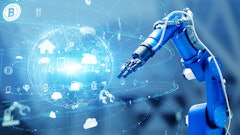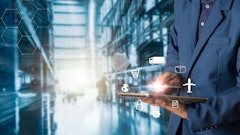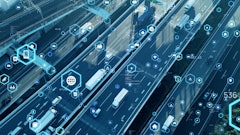
Advancements in technology will provide supply chain technology leaders and chief supply chain officers (CSCOs) with opportunities to support new business models, augment and automate decision making and foster ecosystem collaboration, according to Gartner, Inc.
“This year’s trends are driven by themes that encourage supply chain technology leaders to ensure their foundation can support both past and future investments, while also looking ahead for new differentiation opportunities,” says Christian Titze, VP analyst in Gartner’s Supply Chain Practice. “AI variants continue to be both a driver of trends, such as in robotics, and a trend itself, this year represented by ‘Composite AI.’”
This year’s supply chain technology trends were driven by two broad themes: the need for supply chain leaders to leverage emerging technologies to control and protect their businesses and new opportunities for competitive differentiation through the complementary integration of humans and machines.
Here are the Top 8 strategic supply chain technology trends for 2024.
Cyber extortion. Cyber criminals are highly successful at executing ransomware attacks to extort funds from supply chain organizations. It is highly likely that they will utilize the power of artificial intelligence (AI) to generate advanced attack tools, making their attacks even more effective. Supply chain technology leaders should collaborate with IT leadership to confirm ransomware attack scenarios are included in the corporate risk management processes and develop a detailed ransomware incident response playbook.
Supply chain data governance. The emergence of powerful tools for advanced analytics and AI techniques is massively scaling the capabilities for cross-functional visibility, scenario modeling and decision automation. As those technologies are increasingly adopted, the importance of maintaining a high level of data quality and strict governance process is becoming business mission critical.
End-to-end sustainable supply chains. Sustainability-related legislation is growing globally and driving a shift from voluntary to regulatory compliance. As a result, sustainability data accuracy needs to be uplifted from indicators to being investment grade to meet stakeholder requirements, while also driving internal decision making.
AI-enabled vision systems. AI-enabled vision systems are novel hyper-automation solutions that combine industrial 3D cameras, computer vision software and advanced AI pattern recognition technologies. These solutions can autonomously capture, interpret, and make inferences based on the unstructured images the vision systems see in real-time.
Augmented connected workforce. Augmented connected workforce (ACWF) initiatives reduce the time required after onboarding for an employee to become fully productive and improve their decision making. The ACWF is a strategy to optimize the value derived from a human worker by establishing a connective tissue that optimizes the use of intelligent technology, workforce analytics and skills augmentation. It treats these capabilities as a unified, cohesive strategy to accelerate and scale talent.
Composite AI. Composite AI is the combined application of multiple AI techniques to improve the efficiency and accuracy of learning to broaden the level of knowledge representations, and ultimately, to solve a variety of business problems that drive supply chain performance improvements. Depending on the context of a specific use case, different AI techniques, or more often a combination of techniques, will make more sense than relying any on a “one-size-fits-all” approach.
Next-generation humanoid working robots. Next-generation humanoid robots combine sensory awareness with mobile manipulation and dynamic locomotion to perform productive work that was previously relegated to biological humans. Humanoid robots will typically imitate the human body with a head with sensors and cameras for sensing its environment; a body that houses the power and mechanicals; arms and hands/grippers for grasping, manipulating and carrying items; and legs for dynamic locomotion.
Machine customers. Machine customers are non-human economic actors that autonomously obtain goods or services in exchange for payment. Examples include Internet of Things (IoT)-connected devices or assets that place orders independently of a human command, intelligent replenishment algorithms that maintain availability of consumables and intelligent assistants that suggest deals to consumers.


























